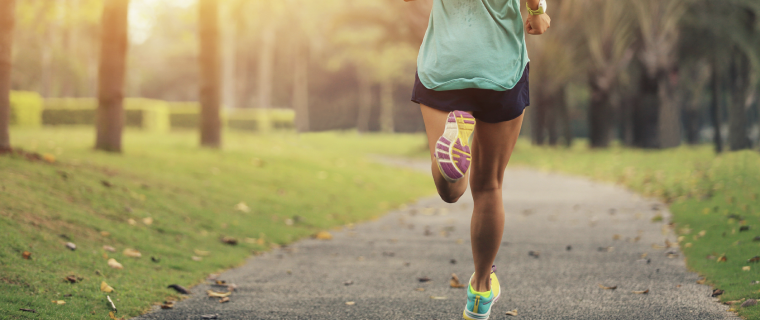When runners advance from a 5K to longer runs, one of the first things they notice is what a toll it can take on their feet. Shoes that are too small, ill fitting, or that don’t provide runners with arch support are just a few of the causes of sore feet after a long run.
We know how important it is to keep feet fresh, especially when training for longer road races, so we put together these tips to support your feet and keep them tip-top on long runs.
Get the Right Shoes
If you are running in a shoe that lacks arch support, is poorly made, or just doesn’t fit right, you may get blisters, soreness, numbness, and potentially lasting foot pain. Shoes that are too short can cause black toenails and those that are too wide can lead to blisters. Running trainers that lack proper arch support can also cause foot, joint, and back pain.
Finding the shoe that fits your foot properly can be a challenge if you have feet that are large, small, narrow, or wide, since stores usually carry only the most popular sizes. Look for brands that offer different widths, or seek advice from a specialty running store. Though your feet stop growing when you're a teenager, they will change size throughout adulthood, so remember to have your feet measured when you head out to try on sneakers. Runners can benefit from seeking out a pedorthist when they shop, as opposed to trying their luck with untrained sales people at the big chain stores.
Finally, running experts recommend getting a shoe that’s half a size larger than your regular shoe size. As you run, your foot will swell and expand. Your shoe will also shrink over time, especially if you get them wet regularly. Having some wiggle room for your toes will help keep your feet happy.
Use an Insole
If you are looking to reduce foot pain, recover from runs faster, and increase foot efficiency, give an over-the-counter insole a try. Running shoes already have an insole, but getting a specialized consumer insole can improve how your shoes fits and functions, and will likely outlast not just this pair of running shoes, but your next few pairs as well.
The right kind of insole gives runners added arch support, shock absorption with each step, and a deeper heel cup that cradles the feet, encouraging proper alignment from toe to hip. When you shop for an over-the-counter insole, beware of flimsy gels and other, less expensive products that break down quickly. A well made insole not only helps keep your feet fresh and provide support, but spending a little more for a quality product will give you more for your money.
Strengthen Your Feet
You’ve likely spent time doing some strength training of your larger muscle groups, like your core and legs, but the muscles in the feet also need strengthening if you are to advance to longer runs. Weak foot muscles will not move in the correct running position and over time can lead to pain and injury. Look for exercises that stretch and strengthen your feet to keep them strong and flexible.
Wear sensible shoes every day
If you are serious about running, you’ve probably spent plenty on your running shoes, but if you are wearing inexpensive, flimsy shoes the rest of the day, you’re not doing your feet any favors. Chronic foot pain caused by plantar fasciitis or flat feet will be exacerbated by flip-flops, high heels and other shoes that lack proper cushioning and support.
One way to protect your feet in your favorite pair of street shoes is to get an insole that offers support and proper alignment that can easily be transferred from running to casual shoes.
Pamper Your Feet
You are counting on your feet to carry you through on those long runs, so why not treat them right? If you notice your feet swell after a long run, apply ice or soak them in cool water. Elevating your feet for several minutes with an ice pack or cool compress can help too.
Some people swear by a quick foot massage or a foot roller to work out stiffness after a run and to relieve ailments like plantar fasciitis.
Even if you don’t have the time for long soaks and a massage, moisturizing feet and keeping toenails trimmed will go a long way in preventing pesky blisters.
As you train for that half or full marathon, keep in mind that these long runs mean more stress on your feet and joints. Making sure you have the right footwear and proper support will not only keep your feet feeling fresh, but also prevent injuries and pain that can keep you from reaching your goal.














